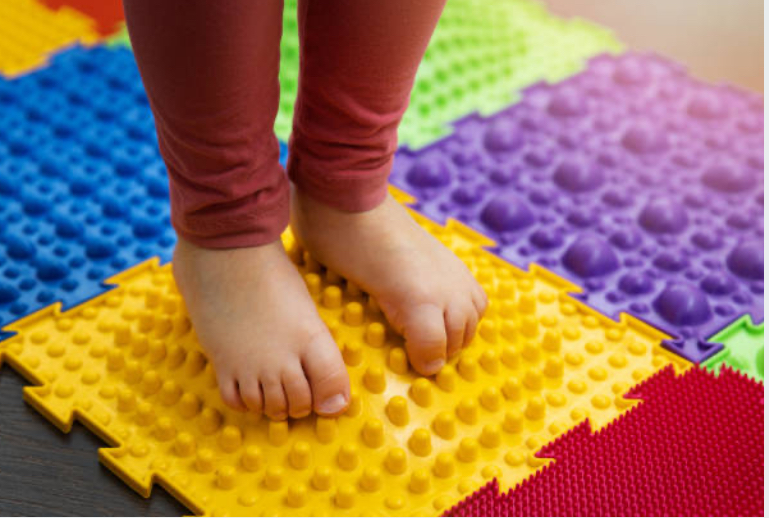Sensory mats are more than just a place to sit or stand—they’re tactile canvases for regulation, tracking, and self-expression. Designed for anyone from toddlers learning textures to adults needing sensory grounding, these mats offer tactile variety, deep-pressure movement, and visual patterns to support focus, balance, and emotional wellness.
🔍 How Sensory Mats Support Regulation
- Tactile input: Explore soft, rough, bumpy, or gel textures to refine touch perception.
- Proprioceptive feedback: Stepping or pressing into the mat gives grounding pressure that can center the nervous system.
- Motor planning & balance: Textured surfaces can be used barefoot, strengthening coordination and body awareness.
- Visual interest: Contrasting patterns and colors offer visual calm or stimulation based on needs.
👥 Who Benefits Most?
- Sensory seekers or avoiders exploring touch or building comfort with textures.
- Individuals with autism, ADHD, SPD—or anyone who thrives with sensory-based routines.
- Those needing focus tools—such as students working on the floor—or stress relief during transitions.
- Seniors or adults with limited mobility, finding comfort and sensory input through seated or foot-based exploration.
✨ Ways to Use Sensory Mats
- Sensory paths: Create walking routes with different mat types for balance games or calming walks.
- Calm zones: Place them in sensory corners with a pillow or soft lighting for grounding breaks.
- Tactile stations: Combine with tools like sensory sand, water beads, or sensory pillows for multi-layered sensory exploration.
- Movement games: Use textured mats for hop-counts, shape matching, or obstacle courses.
🛒 Top Sensory Mat Picks
🌟 Interlocking Tactile Floor Tiles
Best for: Sensory seekers and early walkers
These durable tiles offer a variety of textures and colors that can be arranged into a path or floor play area. Great for encouraging barefoot tactile exploration at home or in therapy spaces.
💧 Liquid Gel Sensory Floor Pad
Best for: Calming visual stimulation and grounding
This colorful mat reacts to pressure and movement with swirling liquid patterns, offering a visually soothing and tactile-rich experience—perfect for calm-down zones or visual sensory seekers.
🌀 Balance & Texture Stepping Stones
Best for: Movement-based sensory input and balance training
With varied and gentle elevation, these sensory stones challenge proprioception and motor planning. Great for obstacle courses or playful regulation breaks.
🙋♀️ Frequently Asked Questions
Are sensory mats safe for older adults?
Yes—just choose low-profile mats and use them on secure, non-slip surfaces to ensure safety and accessibility.
Which mat type should I try first?
Textured interlocking tiles work well for tactile exploration; gel mats are soothing; wobble mats help improve balance.
Where should I use sensory mats?
At home (e.g. calm-down corners), classrooms, therapy rooms—or even in office spaces for sensory-friendly workstations.
As an Amazon Associate, SensoryGift.com earns from qualifying purchases. Thank you for supporting inclusive sensory solutions.



